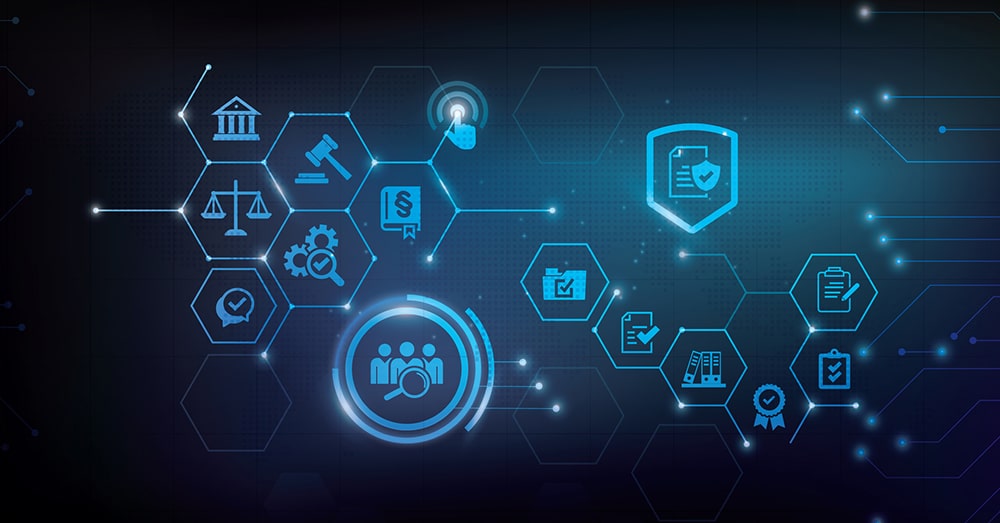Modern data access governance is a delicate balancing act.
Where organizations have to be both privacy-driven and data-driven. And where business leaders have to secure user data and stay compliant, while also uncovering insight and optimizing operations.
Maintaining this equilibrium calls for regular recalibration of data access control techniques. After all, data access management is a landscape that’s shifting faster than ever.
“The compliance pressure on privacy, risk, and security professionals is growing. New and evolving privacy regulations are emerging daily, and regulators’ abilities to levy hefty fines is expanding along with business stakeholders’ expectations that their business meets the rules.”
Forrester
This reality is driving and shaping a new framework of principles and standards for governance. Where data governance dovetails with data privacy and security. So that organizations can be data-driven, while also able to protect, secure and manage sensitive information responsibly.
For data and governance leaders, it’s a case of harmonizing the separate data governance-related processes that have existed so far. While also laying foundations that are scalable, repeatable, and able to proactively adapt to legislative changes.
Challenges with current models of data access governance
The question is how best to deliver this vision – in a world where data governance is a moving target.
After all, despite global initiatives such as the OECD framework or Europe-wide GDPR, there’s plenty of variation across economies, regions and industries.
“Geopolitical risks and regulatory fragmentation are resulting in greater complexity for large global firms that operate across borders. All firms will need a geostrategy: the cross-functional integration of political risk management into broader risk management, strategy and governance.“
EY
Silos are a common and natural by-product of such variations. Where data coming in from multiple sources leads to internal inconsistencies, in terms of how data is labeled, surfaced, and accessed. Further silos come from the multiple tools required. Organizations may use one solution for data masking, another for data catalog functions, and another for sharing databases.
The result is fragmentation throughout the data lifecycle. Discoverability and visibility is limited, preventing granular insights from being uncovered and increasing audit and compliance risks. Without a centralized repository, employees are forced to spend time on replicating data for use.
The more such manual and restrictive processes continue, the more policies and permissions become misaligned, opening up vulnerabilities in security.
As organizations have shifted to more hybrid and cloud-based working, this has further accelerated the need for a new approach to privacy, security and governance. Particularly around control, which often remains a manual process – whether that’s setting up custom rules, comparing spreadsheets, or approving access to data sets.
Challenges of monitoring data lineage are further magnified by organizations operating across borders. Where taking advantage of international trade opportunities involves complying with a myriad of regulations.
Naturally this lack of clear lineage impacts visibility. Especially when data resides in multiple repositories or sprawling cloud-based data warehouses. Or accumulating on external hard drives or orphaned collaboration sites. If left unchecked, bottlenecks can soon appear. To get through such bottlenecks, gathering insights often means applying laborious, batch-based processes.
These include creating traditional spreadsheets, using manual input. A time-consuming method that increases risk of error through its repetition. There’s also the increased risk that comes with data duplication and loss of control when it comes to sharing the resulting files as well as reduced effectiveness for tools such as visualization – crucial for democratizing data and for reporting to the business.
For organizations wanting to evolve their data governance to something more holistic, the following components are needed.
Assigned & aligned: Key components of modern data governance
Modern data governance should be a dynamic framework of people, processes, technology. Let’s look at how these components fit together.
Data access management: 3 crucial roles for your people
The first component involves organizing your people. So that you build accountability, bridge departmental silos, and provide clarity over data governance roles and responsibilities.
You can keep things relatively simple, with a framework comprising three roles. These cover strategy, results and tasks, and maintenance.
Data Owners
Data owners are senior stakeholders with accountability over specific or multiple data sets and domains.
They have the authority to agree and sign off data governance workflows, practices and infrastructure. They also have ultimate responsibility when it comes to data access control, hygiene and auditing.
Their main role within the business is primarily strategic. An executive sponsor, feeding back progress to the leadership team. Therefore they may have gaps when it comes to technical knowledge of implementing the framework. That’s where the next role comes in.
Data Stewards
Data Stewards have a deep understanding of their assigned data sets. They’re able to classify data to ensure governance standards are met and implemented. Whether that’s through labeling, archiving or deleting.
Theirs is a more task-focused role. This means they can provide knowledge and insight into how data is being used ‘in the field’. Plus, of course, where any areas are limiting or preventing successful outcomes.
Data custodians
Data custodians are responsible for storing, retaining and securing data governance. Their access to data means they’re more likely to be in an IT-focused role. Primary responsibilities relate to maintaining infrastructure, monitoring access, and securing against threats.
They’ll also be able to identify the systems that would be impacted by any changes, upgrades or transformations to processes. That leads us onto the next stage.
Processes of data access management
We’ve established the three main roles, or the ‘who’ of data governance. So now it’s time to analyze the processes involved, otherwise known as the ‘how’.
Whereas the responsibilities outlined above are relatively fixed, the ‘how’ processes are far more mutable.
That’s because the process involves mapping and classifying data. Understanding how data sets flow through an organization, and the governance required for sensitive items.
It’s about understanding retention and deletion rules. Knowing what happens to data that’s retained and archived, as opposed to deleted or unattended. This component also requires knowing when to apply principles of data privacy, compared to data security.
What is data privacy?
Data privacy means governing how data is collected, shared, and used. Making sure organizations use the information responsibly. With consent of data owners and subjects, who should always be treated with openness and transparency.
This involves keeping people informed about the types of data being collected. Explaining for what purpose, and where it will be stored, shared or applied. It’s a two-way process, where terms and conditions can be offered, before being agreed or declined.
In return for being granted the use of data, organizations are tasked with maintaining privacy of their users, customers and other relevant stakeholders. Methods include anonymizing and obfuscating data, using masking, row-level filtering, hashing and bucketing.
What is data security?
While data privacy focuses more on authorization, data security is concerned with protection.
Although protection in the modern governance sense is also about unlocking business potential. Giving employees a way to work with data, secure in the knowledge that they’re working within required legal and compliance restraints.
“Fifty-five percent of the organizations Gartner surveyed identified the lack of a standardized approach to governance as the biggest barrier to achieving data governance objectives.”
Gartner
Alongside data access governance, this means data governance automation and optimization.
For example, making use of metadata and tags to automatically identify sensitive data. Building a centralized data catalog that transforms information into an asset that can be harnessed. Securing the business with automatic data privacy control, while finding and fixing data lineage gaps and redundancies.
That all may sound easier said than done. The third framework component shows how to make it happen.
Technology: The data access platform for success
The third and final component is technology. More specifically, automated technology.
That’s because modern data governance calls for mapped infrastructure and standardized architecture. Where data privacy and security comes built-in with transparency and accountability. So that employees can focus on collaboration and adding value to the business, without having to manually check they’re meeting legal and governance requirements.
To navigate this constantly evolving environment, companies choose Velotix technology.
The AI-powered data access platform lets your organization and people share, consume and use data. While minimizing risks of accidental disclosure, unnecessary duplication, or unauthorized access.
Policies are verified, built and maintained according to who, what, where, when and how access is granted.
You gain a central source of truth that evolves and learns according to your governance requirements. At a scale beyond traditional human-led processes.
Automating data access approvals and denials take minutes. Instead of getting stuck in silos for days or weeks. So that you can progress at full-speed, toward aligned, secured, and optimized data governance.
To start the journey toward your new data governance automation reality, book a brief, personalized, no-obligation demo today.


